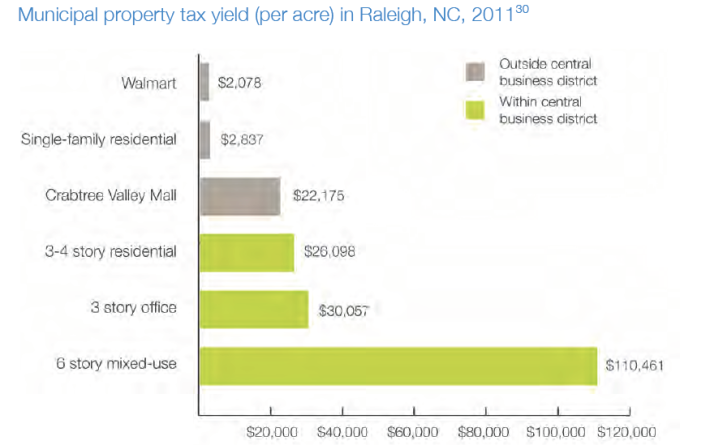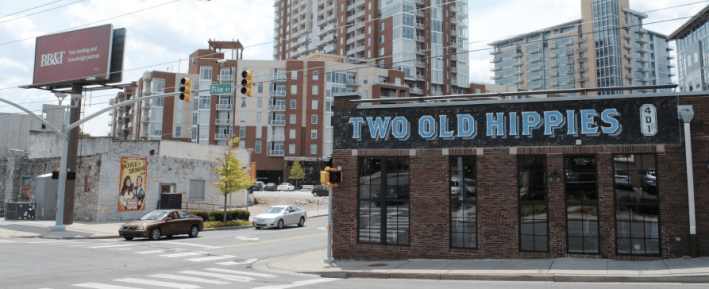
Smart growth could increase Fresno's tax revenue by 45 percent per acre. In Champaign, Illinois, it could save 23 percent per year on city services. Study after study has demonstrated: Walkable, mixed-use development is a much better deal for municipalities than car-oriented suburban development.
Smart Growth America recently conducted an analysis of research examining the impact of efficient development patterns on municipal bottom lines. The authors looked at 17 case studies, from California to Maryland, and, taken together, they say the findings clearly illustrate how walkable development leads to healthier city budgets than drivable sprawl.
For starters, smart growth is cheaper to build. On average, municipalities save about 38 percent on infrastructure costs like roads and sewers when serving compact development instead of large-lot subdivisions. Furthermore, SGA researchers say, "this figure is conservative, and many communities could save even more." In the case studies, these upfront cost savings ranged from 20 percent to 50 percent.
The public savings don't stop once projects get built. Mixed-use projects also reduce ongoing costs to municipalities for services like police, fire and trash. Smart Growth America estimates the average savings at almost 10 percent.
"Many services -- fire, police, school buses, snow plowing -- all require vehicles," said William Fulton, vice president of policy development and implementation at Smart Growth America. "The fewer miles those vehicles have to travel, the lower the costs will be. If you apply smart growth across the board, you can also reduce the amount of cars and trucks that you need."
Charlotte, North Carolina, for example, found that fire department response times would be faster and fewer stations would be needed if the city had a better-connected street grid and closer-set homes. The savings would be significant: It can cost as much as $740 per year per household to provide fire protection services in a suburban environment, and as little as $159 per year in a more compact neighborhood. The study found, further, that smart growth conditions would allow the city to forgo building two fire stations. The up-front construction savings would come to $13 million, while the annual savings from not operating those two fire stations would total about $8 million.
Every study Smart Growth America examined similarly showed that locating residences closer together, with better integrated street patterns, reduced costs for the municipality.

Finally -- and this is the most important part -- smart growth provides a better return for cities and taxpayers. SGA's analysis showed that walkable development generates about 10 times more tax revenue per acre than traditional suburban development. This "alleviates the pressure to raise taxes, which is pressure we feel across the country," said Fulton.
A case study from Sarasota, Florida, compared a downtown development with a suburban development of a similar scope. The study found that the downtown development would pay for its costs to the municipality in three years, while the suburban development would take 42 years.
"This means that smart growth development can pretty dramatically flip what is a deficit for taxpayers, and turn it into a surplus," Fulton says.
As we reported a few weeks ago, a case study conducted by SGA in the Nashville region showed a similarly stark contrast. Comparing a dense, mixed-use downtown development to traditional suburban sprawl, the study found that smart growth returned 1,150 times more tax revenue per acre to the municipality.
All in all, SGA estimates, about a third of local government expenses are directly affected by land use decisions.
"Every community is different, and not all communities’ outcomes will be the same," the SGA authors write. "However, our research consistently demonstrated lower costs and higher revenues from smart growth development."





